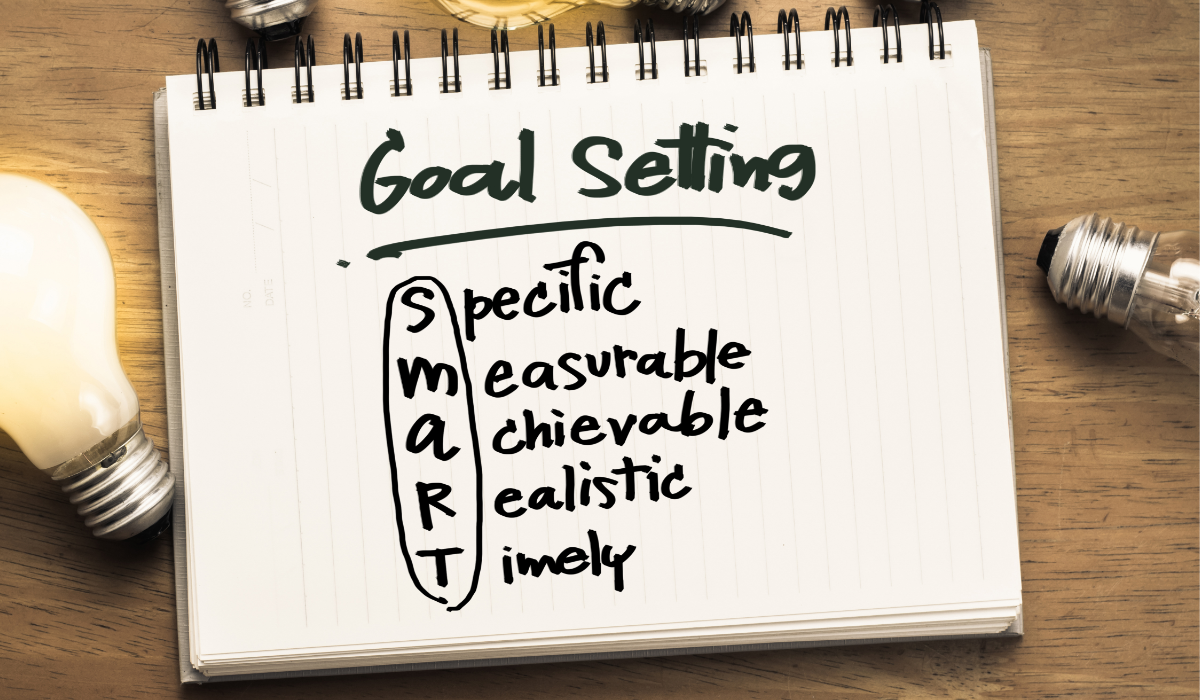Be sure to visit our IEP webpage to see how Goals and Objectives fit into the IEP process.
Where do goals fit into the IEP process?
Goals are developed based on the strengths and weaknesses included in the PLAAFP Statement. Then the IEP team determines what supports and services will be provided for the student to reach their goals.
What is the difference between goals and objectives?
What we commonly call “Goals and Objectives” are two separate concepts in IDEA.
GOALS
The IEP goals are the specific skills or behaviors that the student will master in one year’s time.
Annual goals are like a road map. Where’s the child heading this year? What will he or she work on, both academically and in terms of functional development? What does the IEP team feel the child can achieve by the end of the year–again, academically and functionally? A well-written goal should be (a) positive, and (b) describe a skill that can be seen and measured. It answers the questions:
Who?. . . will achieve?
What?. . . skill or behavior?
How?. . . in what manner or at what level?
Where?. . . in what setting or under what conditions?
When?. . . by what time? an ending date?”
- Annual Goals CPIR
OBJECTIVES
In the federal law IDEA, objectives are known as benchmarks or short-term objectives. From NICHCY: Benchmarks indicate the interim steps a child will take to reach an annual goal. They also serve as a measurement gauge to monitor a child’s progress and determine if the child is making sufficient progress towards attaining an annual goal. Using a roadmap analogy, benchmarks and short-term objectives are used to divide the trip to the final destination into concrete, smaller steps.
What are SMART goals?
The term SMART is an acronym to remember that goals should be specific, measurable, attainable/action words, are realistic and relevant, and time-limited.
S Specific (exactly what do you want to accomplish)
M Measurable (something you can count or observe)
A Attainable/Action words (choose a goal that can be reached and uses action words that tell what the student will be able to do)
R Realistic and relevant (goals that are meaningful to the individual student)
T Time limited (how long will it take to reach goal, when will progress be measured)
- More on SMART IEPs: Introduction, Start with Baseline Information, Create Goals and Objectives, Use Objective Information, Write Measurable Goals
What is evaluation criteria?
The information on how well a child must perform and how his or her progress will be measured is often called evaluation criteria. Well-written evaluation criteria are part of objective, measurable terms.
For example, a child might be required to perform a task “with 90% accuracy” or get 18 out of 20 words correct in each of 5 trials. These are concrete numbers or scores, establishing what the IEP team considers an acceptable level of performance or progress for the child.
In other instances, progress may not be measured in number scores, such as statements like this:
By June 15, Vicky will complete the obstacle course unassisted, as documented by the adapted physical education teacher.
In this example, the teacher will observe and take notes while Vicky completes the obstacle course. Teacher observation/notes are one way of checking progress.
Other ways of checking progress may include:
- reviewing class work and homework assignments;
- giving quizzes, tests, or teacher-made assessments; and
- giving informal and/or formal assessments (the QRI or Woodcock-Johnson, for example).
Endrew F v. Douglas County
Endrew F. v. Douglas County School District was a United States Supreme Court case that held that IDEA (Individuals with Disabilities Education Act) requires schools to provide students an IEP (Individualized Education Program) that is “reasonably calculated to enable a child to make progress appropriate in light of the child’s circumstances.” The Court additionally emphasized the requirement that “every child should have the chance to meet challenging objectives.”
The IEP must include annual goals that aim to improve educational results and functional performance for each child with a disability. This includes a meaningful opportunity for the child to meet challenging objectives. Each child with a disability must be offered an IEP that is designed to provide access to instructional strategies and curricula aligned to both challenging State academic content standards and ambitious goals, based on the unique circumstances of that child.
How do I know if my child is going to master their goals this year?
Data is kept and reported to help keep your child on track to meet their goal within the identified timeline. Read more about this on our Progress Monitoring webpage.
MDE Resources
- Measurable Annual Goals MDE
- Measurable Annual Goals and Short-Term Objectives—Substantive Compliance MDE
Need a starting point?
Also available is The Goal Bank


